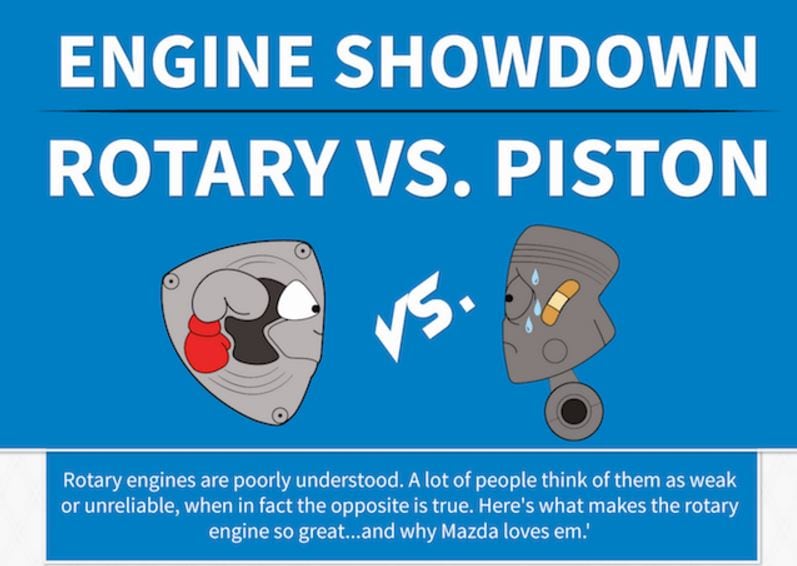A new infographic from MazdaPartsUSA.com explains why the Wankel rotary engine continues to be part of Mazda’s future product plans. The graphic highlights the rotary engine’s superior power to weight ratio, smooth acceleration, and simplicity. The graphic also explains why Mazda “loves” the rotary engine.
“Most people don’t realize the numerous advantages the rotary engine offers over a standard 4-stroke engine,” explains Frank Mitchell, Manager and Director of MazdaPartsUSA.com. “Dare I say it, but rotary engines are in many ways the best engine option available,” says Mitchell.

The graphic highlights many advantages that Wankel rotary engines enjoy over Otto 4-stroke engines, including:
- A substantially simpler design, as rotary engines do not require a crankshaft, rods, valves, or a camshaft. This makes rotary engines inherently more durable.
- A more efficient design, at least in terms of power to weight ratio. Because rotary engines have fewer moving parts, they produce about 3 times as much power as a similarly sized Otto 4-stroke engine (by weight).
- Smooth acceleration with a very high redline, making the rotary engine a perfect choice for many racing applications.
The graphic also mentions the rumored return of the rotary engine in a production Mazda product, specifically in a new RX-9. The graphic includes an image of Mazda’s RX-Vision concept car, which is said to be a preview of the next generation RX sports coupe.
“I don’t have any insider info, and I’m not offering any predictions here, but I’d be shocked if Mazda brought back the RX without offering a rotary engine,” says Mitchell. “While the rotary’s emissions aren’t as clean as other engines, Mazda’s SKYACTIV technologies are impressive. It wouldn’t surprise me at all if Mazda has found a way to make the rotary engine meet future emissions standards,” explains Mitchell.







